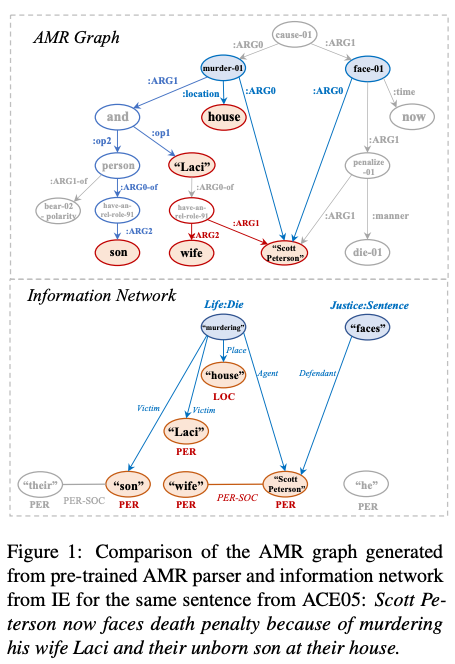This paper exploits rich semantics in AMR graph to enhance message passing in relation classification of an IE system. They align entities and events to AMR nodes then use Graph Attention Networks to perform message passing. During decoding, they follow the top-down order of the AMR instead of the conventional word order.

Comments
- It’s fundamentally wrong to assume an alignment of word to AMR nodes since AMR is NOT designed that way!
- The title and introduction is a clickbait. Using an AMR only improves the relation classification part. Their entity/event extraction part is not improved at all. I hope this limitation is clearly stated but I did not see it anywhere.
Rating
- 5: Transformative: This paper is likely to change our field. It should be considered for a best paper award.
- 4.5: Exciting: It changed my thinking on this topic. I would fight for it to be accepted.
- 4: Strong: I learned a lot from it. I would like to see it accepted.
- 3.5: Leaning positive: It can be accepted more or less in its current form. However, the work it describes is not particularly exciting and/or inspiring, so it will not be a big loss if people don’t see it in this conference.
- 3: Ambivalent: It has merits (e.g., it reports state-of-the-art results, the idea is nice), but there are key weaknesses (e.g., I didn’t learn much from it, evaluation is not convincing, it describes incremental work). I believe it can significantly benefit from another round of revision, but I won’t object to accepting it if my co-reviewers are willing to champion it.
- 2.5: Leaning negative: I am leaning towards rejection, but I can be persuaded if my co-reviewers think otherwise.
- 2: Mediocre: I would rather not see it in the conference.
- 1.5: Weak: I am pretty confident that it should be rejected.
- 1: Poor: I would fight to have it rejected.
0 投票者
